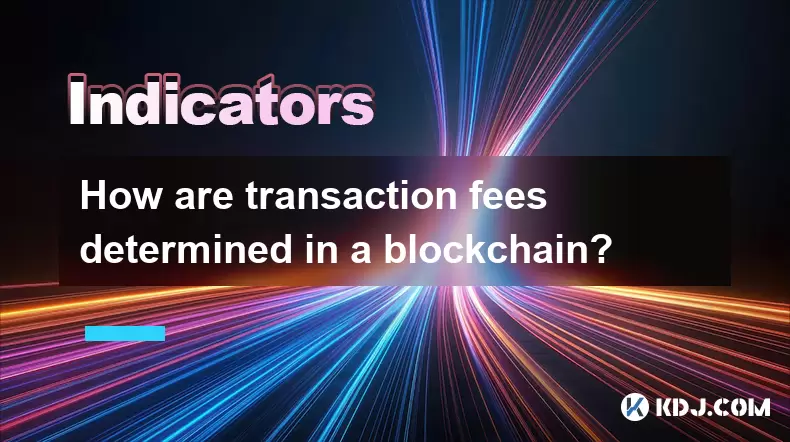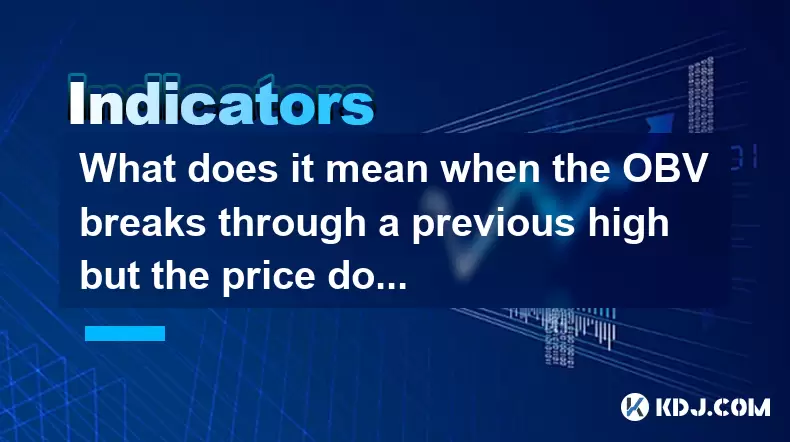-
 Bitcoin
Bitcoin $116700
0.24% -
 Ethereum
Ethereum $3973
4.34% -
 XRP
XRP $3.283
7.68% -
 Tether USDt
Tether USDt $1.000
0.01% -
 BNB
BNB $789.8
2.27% -
 Solana
Solana $176.2
3.31% -
 USDC
USDC $0.9999
0.00% -
 Dogecoin
Dogecoin $0.2238
5.14% -
 TRON
TRON $0.3389
-0.51% -
 Cardano
Cardano $0.7907
4.03% -
 Stellar
Stellar $0.4527
10.02% -
 Hyperliquid
Hyperliquid $41.07
4.27% -
 Sui
Sui $3.794
1.77% -
 Chainlink
Chainlink $19.49
10.40% -
 Bitcoin Cash
Bitcoin Cash $580.9
0.74% -
 Hedera
Hedera $0.2617
4.32% -
 Avalanche
Avalanche $23.41
3.67% -
 Ethena USDe
Ethena USDe $1.001
-0.03% -
 Litecoin
Litecoin $122.4
1.38% -
 Toncoin
Toncoin $3.364
1.49% -
 UNUS SED LEO
UNUS SED LEO $8.988
0.37% -
 Shiba Inu
Shiba Inu $0.00001295
2.82% -
 Uniswap
Uniswap $10.62
5.75% -
 Polkadot
Polkadot $3.922
4.46% -
 Dai
Dai $1.000
0.01% -
 Bitget Token
Bitget Token $4.494
2.15% -
 Monero
Monero $268.0
-1.30% -
 Cronos
Cronos $0.1523
3.68% -
 Pepe
Pepe $0.00001127
4.43% -
 Aave
Aave $285.4
4.85%
How are transaction fees determined in a blockchain?
Blockchain transaction fees are driven by supply and demand, with users paying more during high network congestion to prioritize their transactions.
Aug 07, 2025 at 04:14 pm

Understanding the Basics of Blockchain Transaction Fees
Transaction fees in a blockchain are incentives paid by users to have their transactions processed and included in a block by network validators or miners. These fees are essential for maintaining the security and efficiency of decentralized networks. In most blockchains, transaction fees are determined by supply and demand dynamics within the network’s mempool—the temporary storage area where pending transactions await confirmation. When the network experiences high traffic, users often increase the fee they are willing to pay to prioritize their transactions. Conversely, during low-usage periods, fees may drop significantly. The base fee, if applicable (as in Ethereum post-EIP-1559), is algorithmically adjusted based on block congestion, ensuring that fees respond dynamically to network conditions.
Role of the Mempool in Fee Determination
The mempool acts as a waiting room for unconfirmed transactions. Each node in the network maintains its own version of the mempool, holding transactions that have been broadcast but not yet included in a block. Miners or validators typically select transactions from the mempool based on the fee per unit of computational resource (such as gas in Ethereum). This means higher-paying transactions are processed first. If the mempool becomes congested, lower-fee transactions may remain unconfirmed for extended periods. Users can monitor the current mempool status using blockchain explorers or fee estimation tools to decide on an appropriate fee. The priority of a transaction is directly proportional to its fee rate, not its chronological arrival time.
Ethereum’s EIP-1559 and Dynamic Fee Mechanism
Ethereum introduced a significant change to fee mechanics with EIP-1559, which split the transaction fee into two components: the base fee and the priority fee (or tip). The base fee is automatically calculated and burned, meaning it is removed from circulation, while the priority fee is given to the validator as an incentive to include the transaction in the next block. The base fee adjusts each block based on how full the previous block was. If a block exceeds the target gas limit, the base fee increases; if it’s underutilized, the base fee decreases. This mechanism aims to stabilize transaction costs over time. Users must specify both a max fee (the highest they’re willing to pay) and a max priority fee (the maximum tip for the validator). The actual fee paid is the sum of the priority fee and the difference between the max fee and the base fee, if any remains.
Bitcoin’s Fee Market and Transaction Prioritization
In Bitcoin, transaction fees are determined entirely by market competition. There is no base fee or burning mechanism. Instead, users attach a fee calculated as satoshis per virtual byte (sat/vB). Miners scan the mempool and select transactions offering the highest sat/vB to maximize their revenue. Tools like Bitcoin Core or third-party services estimate current fee rates based on mempool congestion. To calculate the appropriate fee, a user must estimate the size of their transaction in virtual bytes and multiply it by the recommended sat/vB rate. For example, a 250 vB transaction at 50 sat/vB requires a 12,500 satoshi (0.000125 BTC) fee. During events like NFT mints or exchange withdrawals, fee spikes can exceed 100 sat/vB, making transactions costly. Users can use Replace-By-Fee (RBF) to increase the fee of an unconfirmed transaction or Child-Pays-For-Parent (CPFP) to boost confirmation chances indirectly.
Layer 2 Solutions and Fee Reduction Strategies
To mitigate high fees on mainnets, many users turn to Layer 2 (L2) scaling solutions such as rollups (Optimistic or zk-Rollups) or state channels. These solutions batch multiple transactions off-chain and submit a single proof or summary to the main blockchain, drastically reducing per-transaction costs. For instance, on Arbitrum or zkSync, fees can be less than 1% of Ethereum mainnet costs. Users interact with L2s by bridging assets from the main chain, paying a one-time bridging fee. Transaction fees on L2s are still influenced by demand but are generally more stable due to higher throughput. Some L2s even allow fee payments in alternative tokens or sponsor gas for users, further diversifying fee models. Monitoring L2-specific explorers and fee dashboards is crucial for optimizing cost-efficiency.
Manual Fee Setting and Wallet Configuration
Most cryptocurrency wallets provide options to manually set transaction fees. This is useful when automating fee selection may lead to overpayment or underpayment. To manually configure fees:
- Open your wallet’s send interface and locate the fee settings (often labeled “Advanced” or “Custom Fee”).
- Choose the fee unit (e.g., sat/vB for Bitcoin, Gwei for Ethereum).
- Input a fee rate based on real-time network data from sources like mempool.space or etherscan.io/gastracker.
- Review the estimated confirmation time associated with your chosen fee.
- Confirm and broadcast the transaction.
Some wallets support fee bumping via RBF or speed-up options that rebroadcast the transaction with a higher fee. Always ensure your wallet supports the network’s latest fee protocols, especially for EIP-1559-compatible chains.
Frequently Asked Questions
What happens to unconfirmed transactions with low fees?
Transactions with insufficient fees may remain in the mempool indefinitely. Nodes periodically evict them based on age and fee rate. Users can either wait for network congestion to drop or use RBF to replace the transaction with a higher fee.
Can transaction fees be zero in any blockchain?
Some blockchains, particularly those using alternative consensus mechanisms like DAGs or with subsidized networks, may allow zero-fee transactions. However, in major proof-of-work or proof-of-stake chains like Bitcoin or Ethereum, a non-zero fee is mandatory to prevent spam and ensure miner/validator incentive.
How do I check current transaction fees before sending?
Use real-time fee trackers such as mempool.space for Bitcoin or etherscan.io/gastracker for Ethereum. These platforms display recommended fee rates based on desired confirmation speed (e.g., 1-block, 3-block, or 10-block confirmation).
Why do NFT mints cause sudden fee spikes?
NFT mints often involve thousands of users sending transactions simultaneously, overwhelming the mempool. This surge in demand causes miners to prioritize higher-fee transactions, pushing average fees upward. Participating in mint events requires careful timing and fee estimation to avoid excessive costs.
Disclaimer:info@kdj.com
The information provided is not trading advice. kdj.com does not assume any responsibility for any investments made based on the information provided in this article. Cryptocurrencies are highly volatile and it is highly recommended that you invest with caution after thorough research!
If you believe that the content used on this website infringes your copyright, please contact us immediately (info@kdj.com) and we will delete it promptly.
- Solana, Litecoin, Remittix: Unpacking the Latest Crypto Trends
- 2025-08-09 09:30:12
- Bitcoin Cash, AIXA Miner, and Daily Income: A New Yorker's Take
- 2025-08-09 09:30:12
- Trump, Crypto, and Public Companies: A New York Minute on Digital Finance
- 2025-08-09 09:50:12
- Trump's 401(k) Crypto Revolution: Is Your Retirement Ready?
- 2025-08-09 09:50:12
- Coinbase, DEX Trading, and Self-Custody: A New Era for Crypto?
- 2025-08-09 09:55:11
- Trump Family, Crypto Ventures, and Stablecoins: A New York Minute on USD1
- 2025-08-09 09:55:11
Related knowledge

What does it mean when the Williams' oscillator repeatedly hits bottoms but fails to rebound?
Aug 09,2025 at 09:28am
Understanding the Williams %R OscillatorThe Williams %R oscillator, developed by Larry Williams, is a momentum indicator used in technical analysis to...

When the J line in the KDJ indicator suddenly turns downward after being continuously overbought, does it indicate a top?
Aug 09,2025 at 06:35am
Understanding the KDJ Indicator and Its ComponentsThe KDJ indicator is a momentum oscillator widely used in cryptocurrency technical analysis to ident...

What does it mean when the TRIX indicator suddenly diverges downward after a long period of convergence?
Aug 09,2025 at 12:56am
Understanding the TRIX Indicator in Cryptocurrency TradingThe TRIX indicator, or Triple Exponential Average, is a momentum oscillator used in technica...

What does it mean when the OBV breaks through a previous high but the price doesn't reach a new high?
Aug 09,2025 at 07:57am
Understanding the On-Balance Volume (OBV) IndicatorThe On-Balance Volume (OBV) is a technical analysis indicator that uses volume flow to predict chan...

Why is the rise limited after a MACD bottoming divergence?
Aug 09,2025 at 12:07am
Understanding MACD Bottoming Divergence in Cryptocurrency TradingThe MACD (Moving Average Convergence Divergence) is a widely used technical indicator...

What does it mean when the OBV continues to rise but the price is trading sideways?
Aug 08,2025 at 10:35pm
Understanding On-Balance Volume (OBV)On-Balance Volume (OBV) is a technical indicator that uses volume flow to predict changes in stock or cryptocurre...

What does it mean when the Williams' oscillator repeatedly hits bottoms but fails to rebound?
Aug 09,2025 at 09:28am
Understanding the Williams %R OscillatorThe Williams %R oscillator, developed by Larry Williams, is a momentum indicator used in technical analysis to...

When the J line in the KDJ indicator suddenly turns downward after being continuously overbought, does it indicate a top?
Aug 09,2025 at 06:35am
Understanding the KDJ Indicator and Its ComponentsThe KDJ indicator is a momentum oscillator widely used in cryptocurrency technical analysis to ident...

What does it mean when the TRIX indicator suddenly diverges downward after a long period of convergence?
Aug 09,2025 at 12:56am
Understanding the TRIX Indicator in Cryptocurrency TradingThe TRIX indicator, or Triple Exponential Average, is a momentum oscillator used in technica...

What does it mean when the OBV breaks through a previous high but the price doesn't reach a new high?
Aug 09,2025 at 07:57am
Understanding the On-Balance Volume (OBV) IndicatorThe On-Balance Volume (OBV) is a technical analysis indicator that uses volume flow to predict chan...

Why is the rise limited after a MACD bottoming divergence?
Aug 09,2025 at 12:07am
Understanding MACD Bottoming Divergence in Cryptocurrency TradingThe MACD (Moving Average Convergence Divergence) is a widely used technical indicator...

What does it mean when the OBV continues to rise but the price is trading sideways?
Aug 08,2025 at 10:35pm
Understanding On-Balance Volume (OBV)On-Balance Volume (OBV) is a technical indicator that uses volume flow to predict changes in stock or cryptocurre...
See all articles

























































































